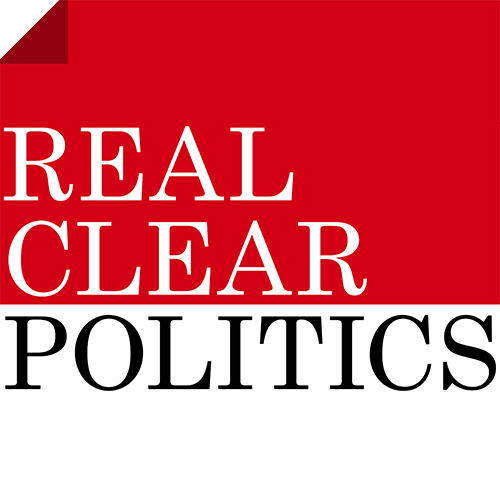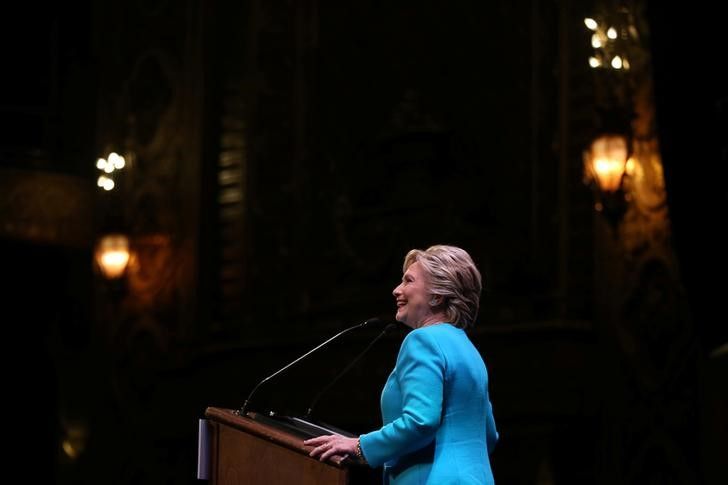- Sep 15, 2012
- 5,268
- 1,192
- 130
Polling data is mostly accurate, even in the 2016 election.
In the 2016 election, the polls correctly predicted the winner of the popular vote, Hillary Clinton.
The polls were also correct in predicting the winner in 46 out of 50 states in 2016.
The only states where polling failed to correctly predict the winner in 2016 were the following:
Wisconsin
Michigan
Pennsylvania
Nevada
NEVADA: The average of the polls by Real Clear Politics on the eve the election in 2016 showed Trump winning by a small margin with a lead of 0.8% over Hillary Clinton. It turned out that Clinton won the state by 2.4% points. Not a surprise though because when polling data show that candidates are within 3 percentage points of each other, it shows the state is a TOSS UP and could go either way. So despite the polling failing to predict the winner, it was a essentially a close election in Nevada and in the TOSS UP category, so this was no surprise and the polling despite failing to pick the winner was essentially accurate given how close it was.

 www.realclearpolitics.com
www.realclearpolitics.com
PENNSYLVANIA: Just like Nevada, the polling on the eve of the election showed a close race in Pennsylvania. Hillary was predicted by polling to win by a slim margin of 1.9% points and instead lost by 0.7% points. Again, the polling lead was less than 3 percentage points making it essentially a TOSS UP. So even here, the polling was actually pretty accurate despite not picking the winner since the polling showed it was very close.

 www.realclearpolitics.com
www.realclearpolitics.com
MICHIGAN: Hillary Clinton had a 3.4% point lead in the polling on the eve of the election in 2016. Above 3%, this was more than just a TOSS UP or close and Hillary should have won based on the average of the polls. TRUMP won by a very small margin of 0.3% points. You could the say the polls were wrong here unlike the above two states, but it was not a terrible error. It was likely do more to low voter turnout by Democrats, then any sort of switch to support for Trump.
WISCONSIN: This is only state where the polling data was wildly off the mark compared to the election results. The polls on the eve of the election predicted that Hillary Clinton would win by 6.5% points. She instead lost by 0.7% points. But this may not be as bad as it looks. In 2012, Mitt Romney had won 1,408,000 votes in Wisconsin and lost the state by 7 percentage points. Trump won Wisconsin in 2016, but won with 1,405,000 votes, 3,000 less than Mitt Romney in 2012. So how did this happen. A large number of Democratic voters on election day, for whatever the reason, did not make it to to the voting booth. So it was low Democratic voter turnout, rather than a switch to Trump or a surge in voter turnout for Trump that allowed Trump to win the state. Polling shows who people want to be President, but it does not measure who is going to actually show up and vote on election day. At least not in this particular case. So it could be argued that the polling for Wisconsin was accurate, but that unusual low voter turnout on the Democratic site skewed the results of the actual election compared to what was found in polling.
The 2016 election overall was a close election. The polling was actually very accurate and only failed to pick the winner in four out of 50 states. Two of those four states showed that they were so close that they were essentially TOSS UPS, could go either way. In the most off the mark state , WISCONSIN, when it came to polling, it appears the polls got it right, but many Democrats simply failed to make it to the voting booth that particular day.
It should be mention that the REAL CLEAR POLITICS average of polls correctly predicted the winner of the national election in 2004, 2008, 2012, and 2016. It also correctly predicted the winner of the election in the above four states in 2004, 2008, and 2012.
So the polling is very accurate, and when you see one candidate ahead of the other in the AVERAGE of the latest polling data, its most likely what you will see on election day. The only time when the polling failed to predict the winner in 2016 was just in four states. Two of them the polling show were so close that they were toss ups. In the other two, the polling was still accurate for several reasons, and it only failed to predict the outcome because of unusual low voter turnout by Democrats in those states.
So on the eve of this election in 2020, when the polls show one candidate ahead of the other by at least 3 percentage points or more nationally or in a particular state, you can be pretty sure that candidate will win nationally or in that state. Wisconsin was an aberration in 2016 and is unlikely to occur in 2020.
Joe Biden's current lead in the average of the polls nationally, and in Pennsylvania, Wisconsin, and Michigan from Real Clear Politics:
UNITED STATES:
BIDEN - +6.9%
WISCONSIN:
BIDEN - +6.4%
PENNSYLVANIA:
BIDEN - +5.0%
MICHIGAN:
BIDEN - +6.3%
In the 2016 election, the polls correctly predicted the winner of the popular vote, Hillary Clinton.
The polls were also correct in predicting the winner in 46 out of 50 states in 2016.
The only states where polling failed to correctly predict the winner in 2016 were the following:
Wisconsin
Michigan
Pennsylvania
Nevada
NEVADA: The average of the polls by Real Clear Politics on the eve the election in 2016 showed Trump winning by a small margin with a lead of 0.8% over Hillary Clinton. It turned out that Clinton won the state by 2.4% points. Not a surprise though because when polling data show that candidates are within 3 percentage points of each other, it shows the state is a TOSS UP and could go either way. So despite the polling failing to predict the winner, it was a essentially a close election in Nevada and in the TOSS UP category, so this was no surprise and the polling despite failing to pick the winner was essentially accurate given how close it was.

RealClearPolitics - Election 2016 - Nevada: Trump vs. Clinton vs. Johnson
RealClearPolitics - Election 2016 - Nevada: Trump vs. Clinton vs. Johnson
PENNSYLVANIA: Just like Nevada, the polling on the eve of the election showed a close race in Pennsylvania. Hillary was predicted by polling to win by a slim margin of 1.9% points and instead lost by 0.7% points. Again, the polling lead was less than 3 percentage points making it essentially a TOSS UP. So even here, the polling was actually pretty accurate despite not picking the winner since the polling showed it was very close.

RealClearPolitics - Election 2016 - Pennsylvania: Trump vs. Clinton vs. Johnson vs. Stein
RealClearPolitics - Election 2016 - Pennsylvania: Trump vs. Clinton vs. Johnson vs. Stein
MICHIGAN: Hillary Clinton had a 3.4% point lead in the polling on the eve of the election in 2016. Above 3%, this was more than just a TOSS UP or close and Hillary should have won based on the average of the polls. TRUMP won by a very small margin of 0.3% points. You could the say the polls were wrong here unlike the above two states, but it was not a terrible error. It was likely do more to low voter turnout by Democrats, then any sort of switch to support for Trump.
WISCONSIN: This is only state where the polling data was wildly off the mark compared to the election results. The polls on the eve of the election predicted that Hillary Clinton would win by 6.5% points. She instead lost by 0.7% points. But this may not be as bad as it looks. In 2012, Mitt Romney had won 1,408,000 votes in Wisconsin and lost the state by 7 percentage points. Trump won Wisconsin in 2016, but won with 1,405,000 votes, 3,000 less than Mitt Romney in 2012. So how did this happen. A large number of Democratic voters on election day, for whatever the reason, did not make it to to the voting booth. So it was low Democratic voter turnout, rather than a switch to Trump or a surge in voter turnout for Trump that allowed Trump to win the state. Polling shows who people want to be President, but it does not measure who is going to actually show up and vote on election day. At least not in this particular case. So it could be argued that the polling for Wisconsin was accurate, but that unusual low voter turnout on the Democratic site skewed the results of the actual election compared to what was found in polling.
The 2016 election overall was a close election. The polling was actually very accurate and only failed to pick the winner in four out of 50 states. Two of those four states showed that they were so close that they were essentially TOSS UPS, could go either way. In the most off the mark state , WISCONSIN, when it came to polling, it appears the polls got it right, but many Democrats simply failed to make it to the voting booth that particular day.
It should be mention that the REAL CLEAR POLITICS average of polls correctly predicted the winner of the national election in 2004, 2008, 2012, and 2016. It also correctly predicted the winner of the election in the above four states in 2004, 2008, and 2012.
So the polling is very accurate, and when you see one candidate ahead of the other in the AVERAGE of the latest polling data, its most likely what you will see on election day. The only time when the polling failed to predict the winner in 2016 was just in four states. Two of them the polling show were so close that they were toss ups. In the other two, the polling was still accurate for several reasons, and it only failed to predict the outcome because of unusual low voter turnout by Democrats in those states.
So on the eve of this election in 2020, when the polls show one candidate ahead of the other by at least 3 percentage points or more nationally or in a particular state, you can be pretty sure that candidate will win nationally or in that state. Wisconsin was an aberration in 2016 and is unlikely to occur in 2020.
Joe Biden's current lead in the average of the polls nationally, and in Pennsylvania, Wisconsin, and Michigan from Real Clear Politics:
UNITED STATES:
BIDEN - +6.9%
WISCONSIN:
BIDEN - +6.4%
PENNSYLVANIA:
BIDEN - +5.0%
MICHIGAN:
BIDEN - +6.3%



